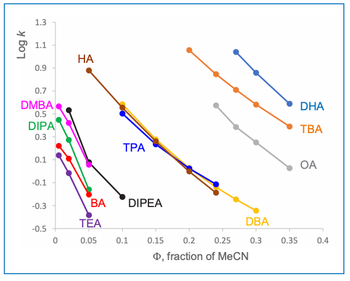
- The Column-04-11-2017
- Volume 13
- Issue 5
Identifying Fraudulent Saffron Using UHPLC–HRMS/MS and Metabolomics
Researchers from the University of Chemistry and Technology in Prague, Czech Republic, have developed a saffron authentication process based on ultrahigh-performance liquid chromatography coupled to high resolution tandem mass spectrometry (UHPLC–HRMS/MS) and multivariate data analysis.
Researchers from the University of Chemistry and Technology in Prague, Czech Republic, have developed a saffron authentication process based on ultrahigh-performance liquid chromatography coupled to high resolution tandem mass spectrometry (UHPLC–HRMS/MS) and multivariate data analysis (1).
As one of the oldest and most expensive spices, saffron is a very enticing target for fraudulent activities. Rare and exotic with a complex production process that varies considerably dependent upon the production region, small amounts of saffron can be sold for a high price. In particular, Spanish saffron is highly sought after, a problem highlighted in the 2011 “saffron scandal”, which revealed that barely one percent of saffron labelled as “Spanish” was actually grown in Spain (2). Other types of saffron are also susceptible with a recent review identifying saffron as the fourth most commonly fraudulent food stuff (3).
Identifying the geographical origin of saffron has commonly been carried out through target analysis of a specific marker such as amino acids (4) or utilized stable isotope analysis (5), however, none of these methods employed a metabolomics approach and as such they relied on a generic extraction procedure. The aim of the current research was to investigate the suitability of metabolic fingerprinting using UHPLC–HRMS/MS to authenticate saffron sample origins and their respective harvest years.
Results indicated untargeted metabolic fingerprinting employing UHPLC–HRMS/MS merged with chemometrics was a formidable tool for saffron origin scrutiny, providing sufficient information to distinguish saffron origin using positive ionization data. The method also showed promise when used to distinguish harvest year using negative ionization data. - L.B.
References
- J. Rubert, O. Lacina, M. Zachariasova, and J. Hajslova, Food Chem.204, 201–209 (2016).
- J.C. Moore, J. Spink, and M. Lipp, J. Food Sci.77, 118–126 (2012).
- M. Hickman, Something smells odd in the lucrative world of saffron (The Independent, 2011) http://www.independent.co.uk/life-style/food-and-drink/news/something-smells-odd-in-the-lucrative-world-of-saffron-2180285.html
- C. Priscila del Campo et al., Food Chem. 114, 1542–1548 (2009).
- L. Maggi et al., Food Chem. 128, 543–548 (2011).
- A. Yilmaz et al., Metabolomics6, 511–517 (2010).
Articles in this issue
over 8 years ago
Volatile Separation: A Low-Density Approachover 8 years ago
Exploring Ocular Disease Using Metabolomicsover 8 years ago
The Alternative Laboratory Manager’s Guideover 8 years ago
Waters Announce Malaysian Expansionover 8 years ago
Shimadzu Launches European Innovation Centerover 8 years ago
Reach Separations Celebrate 5th Birthdayover 8 years ago
Targeting Specific Matrix Interferences for Sample Preparationover 8 years ago
Vol 13 No 5 The Column April 11, 2017 Europe and Asia PDFNewsletter
Join the global community of analytical scientists who trust LCGC for insights on the latest techniques, trends, and expert solutions in chromatography.




